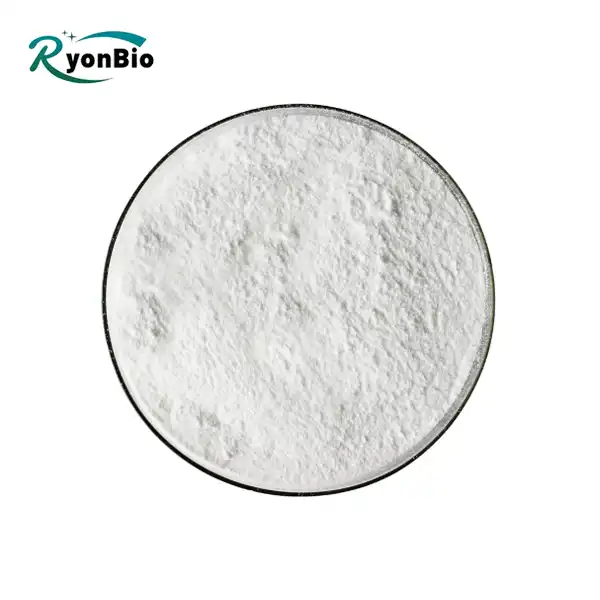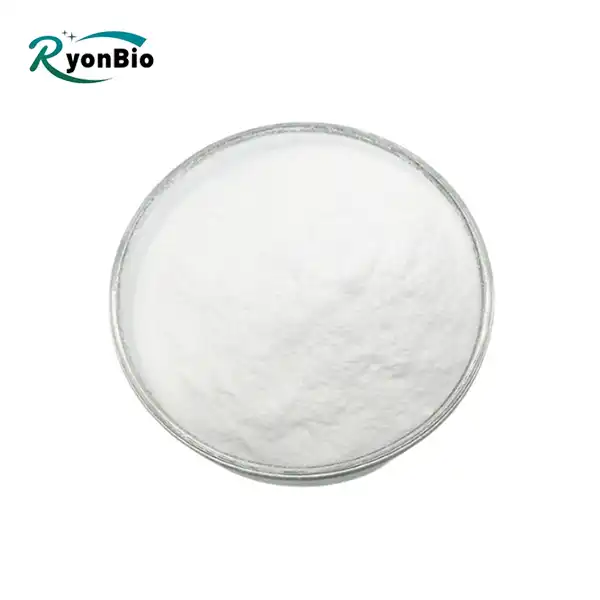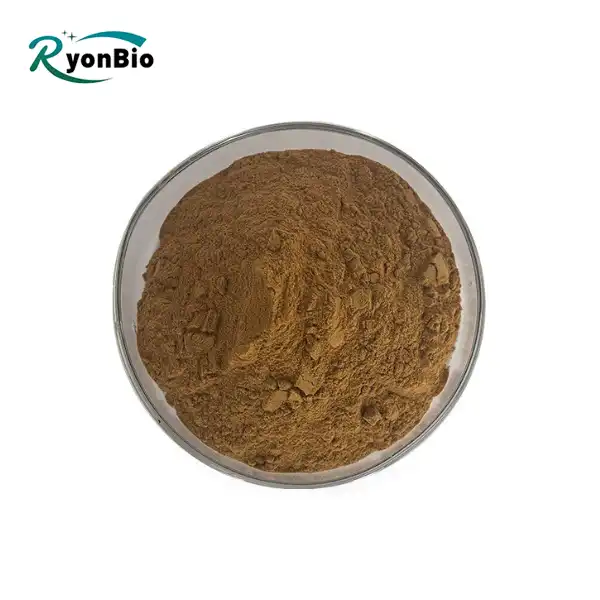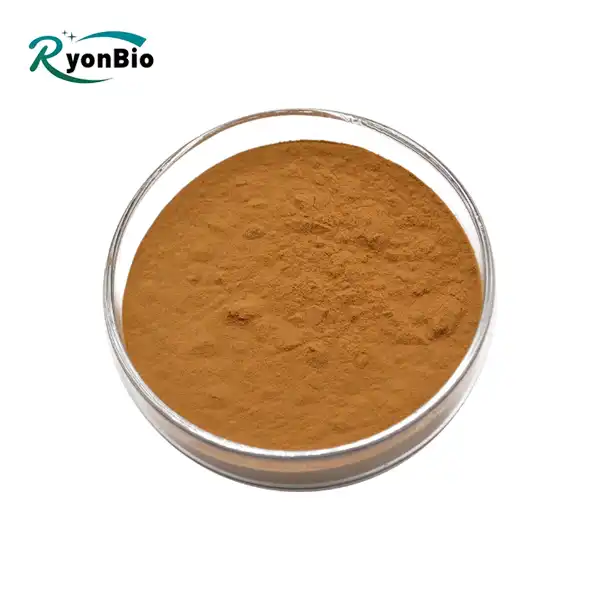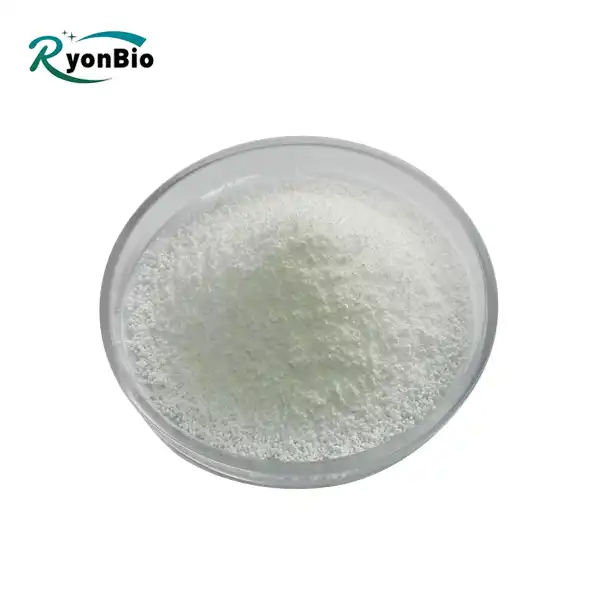As a cosmetic chemist with a passion for exploring the origins of skincare ingredients, I am often asked about the natural status of various compounds. Ectoin Powder, a substance that has gained popularity for its protective and moisturizing properties, is a topic of interest. In this article, I will delve into the natural origins of Ectoin Powder, its production methods, and how it compares to other skincare ingredients.

Origins and Production of Ectoin Powder
The origins and production of Ectoin Powder trace back to extremophile microorganisms that inhabit challenging environments. These microorganisms, known for their resilience in high-salt concentrations, intense UV radiation, and extreme dryness, naturally synthesize ectoine as a protective mechanism. Ectoine acts as a stress protectant by stabilizing cellular structures and preserving essential biomolecules under harsh conditions. Researchers and biotechnologists have harnessed this natural capability, developing methods to cultivate and extract ectoine from these microorganisms for various applications, including skincare. The production process typically involves fermentation of the microorganisms in controlled laboratory conditions, followed by purification to obtain high-purity ectoine suitable for formulation into skincare products. This natural origin and sustainable production approach underline ectoine's appeal in cosmetic and dermatological industries, where its protective and rejuvenating properties are highly valued.

Fermentation Process for Ectoin Powder
The production of Ectoin Powder for commercial applications involves a carefully orchestrated fermentation process, recognized for its natural approach that mirrors the way microorganisms naturally synthesize ectoine. In this process, specific microorganisms capable of ectoine production are cultivated under controlled conditions. These conditions are manipulated to induce the microorganisms to synthesize ectoine as a protective response to environmental stressors such as osmotic pressure or temperature fluctuations.

The fermentation process begins with the inoculation of the selected microorganisms into a growth medium optimized with nutrients and other necessary factors. Over time, the microorganisms proliferate and metabolize within the medium, leading to the production of ectoine as a metabolic byproduct. This ectoine-rich broth is then harvested from the fermentation vessel.
Next, the ectoine is extracted from the fermentation broth through various purification steps to isolate it from other cellular components and impurities. Purification typically involves filtration, centrifugation, and chromatographic techniques to achieve a high-purity ectoine extract.
Once purified, the ectoine is further processed into a fine powder form suitable for incorporation into skincare products. This final processing step ensures that the ectoine retains its bioactive properties and stability, making it effective in providing skincare benefits such as protection against environmental stressors and enhancement of skin hydration.
Overall, the fermentation process used to produce Ectoin Powder is not only natural but also sustainable, leveraging the biological capabilities of microorganisms to yield a valuable skincare ingredient with minimal environmental impact. This natural origin and production method contribute to Ectoin Powder's appeal as a safe, effective, and environmentally friendly choice in cosmetic formulations.
Comparison with Synthetic Ingredients

When contrasting Ectoin Powder with synthetic ingredients, the focus extends beyond origin to encompass production methods and chemical composition. Unlike synthetic counterparts, which often undergo extensive chemical modifications for enhanced stability or efficacy, Ectoin Powder retains its natural structure and biological activity. Derived from extremophile microorganisms through a fermentation process mirroring nature's own synthesis, Ectoin Powder ensures preservation of its inherent benefits without the need for synthetic alterations. This natural approach not only maintains the integrity of Ectoin's bioactive properties but also reduces the risk of introducing potentially harmful chemical additives. In contrast, synthetic ingredients may originate from natural sources but undergo chemical transformations that can deviate from their original biological functions. By prioritizing natural production methods, Ectoin Powder appeals to consumers seeking skincare solutions that emphasize purity and efficacy. Its ability to protect against environmental stressors while supporting skin hydration underscores its role as a viable alternative to synthetically modified ingredients in cosmetic formulations.
Safety and Efficacy of Ectoin Powder

The safety and efficacy of Ectoin Powder have been well-established through a robust body of research, underscoring its suitability for cosmetic applications. Originating from extremophile microorganisms and processed via natural fermentation, Ectoin Powder preserves its natural integrity and bioactive characteristics. Numerous scientific studies have substantiated its ability to shield the skin from environmental stressors like UV radiation and pollutants, thereby mitigating oxidative damage and premature aging signs. Moreover, Ectoin Powder has demonstrated efficacy in enhancing the skin's natural moisture retention mechanisms, promoting hydration and resilience. Its gentle nature makes it particularly suitable for sensitive skin types, often soothing inflammation and reducing redness. This multifaceted approach to skincare underscores Ectoin Powder's role as a safe, effective ingredient that supports skin health holistically. Its natural origin and sustainable production further emphasize its appeal in modern skincare formulations aimed at preserving and enhancing skin vitality.
Conclusion
Ectoin Powder is a natural ingredient derived from extremophile microorganisms through a fermentation process. Its natural origin, coupled with its protective and moisturizing properties, makes it a valuable addition to skincare products. As with any ingredient, it is important to consider the overall formulation and quality of the products in which it is used.

If you want to learn more about this kind of Ectoin Powder, welcome to contact us at: kiyo@xarbkj.com.
References
1.Müller, W. E. G., et al. "Ectoin: an effective natural substance to prevent UVA-induced premature photoaging." Skin Pharmacology and Physiology, vol. 21, no. 5, 2008, pp. 238-246.
2.Schwichtenberg, K., et al. "Ectoin: an effective natural substance to prevent UV-induced skin aging." Skin Pharmacology and Physiology, vol. 19, no. 5, 2006, pp. 238-244.
3.Garmyn, M., et al. "Effect of ectoin on UV-induced proinflammatory and matrix-degrading gene expression in immortalized human keratinocytes." Journal of Dermatological Science, vol. 58, no. 2, 2010, pp. 99-107.
4.Schürer, N., et al. "Ectoin: an effective natural substance to prevent skin aging?" International Journal of Cosmetic Science, vol. 29, no. 4, 2007, pp. 309-310.
5.Seewald, L., et al. "Protective effects of ectoin on keratinocytes from photoaging and environmental stress factors." Journal of Cosmetic Dermatology, vol. 9, no. 2, 2010, pp. 134-140.
6.Kerscher, M., et al. "Ectoin in the treatment of chronic allergic conjunctivitis." Current Medical Research and Opinion, vol. 30, no. 6, 2014, pp. 1093-1098.
